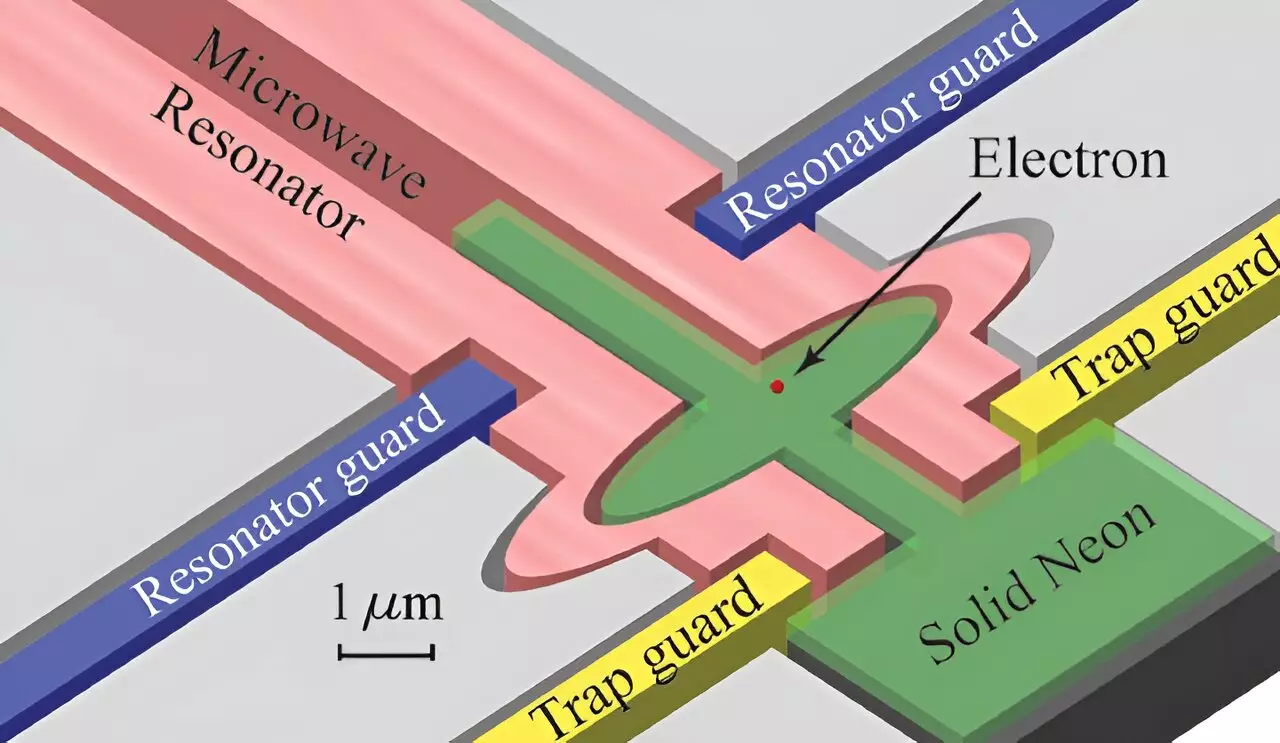Quantum computers are on the verge of becoming revolutionary tools due to their ability to perform complex calculations at an exponential speed compared to classical computers. The key to making an effective quantum computer lies in the reliability of quantum bits, or qubits, which can exist in a state of superposition – both 0 and 1 simultaneously – for a considerable period known as coherence time.
One promising approach in the development of quantum computers is trapping a single electron on a solid neon surface, creating an electron-on-solid-neon qubit. A recent study conducted by Professor Wei Guo from the FAMU-FSU College of Engineering sheds new light on the quantum state of electrons in such qubits, providing important insights for engineers working on this innovative technology.
Guo’s research team discovered that small bumps on the solid neon surface can naturally bind electrons, forming ring-shaped quantum states. These quantum states describe various properties of electrons before they are measured, such as position and momentum. Interestingly, when the bumps are of a specific size, the transition energy of electrons aligns with the energy of microwave photons, enabling controlled manipulation of the electron crucial for quantum computing applications.
Advancements in Quantum Computing
Previous work by Guo and collaborators showcased the viability of solid-state single-electron qubits using electrons trapped on solid neon surfaces. These qubits exhibited coherence times as long as 0.1 milliseconds, a significant improvement compared to conventional charge qubits. The extended coherence time of electron-on-solid-neon qubits can be attributed to the inertness and purity of solid neon, addressing issues faced by other qubit platforms.
Optimizing Electron-on-Solid-Neon Qubits
To further optimize the performance of electron-on-solid-neon qubits, it is essential to design smooth qubits with strategically placed bumps on the solid neon surface. Minimizing naturally occurring bumps that attract background electrical charge, while intentionally creating bumps of the right size within the qubit structure, enhance the electron-trapping capabilities. This research highlights the importance of precise control over the qubit manufacturing process to advance quantum computing technology.
Future Prospects and Conclusion
The research conducted by Guo’s team, along with co-authors, paves the way for the development of robust quantum computing systems using electron-on-solid-neon qubits. By gaining crucial insights into the manufacturing and optimization of these qubits, researchers can push the boundaries of quantum computing and potentially solve complex problems currently deemed unmanageable. As technology advances and our understanding of quantum systems deepens, the future of quantum computing looks promising.


Leave a Reply